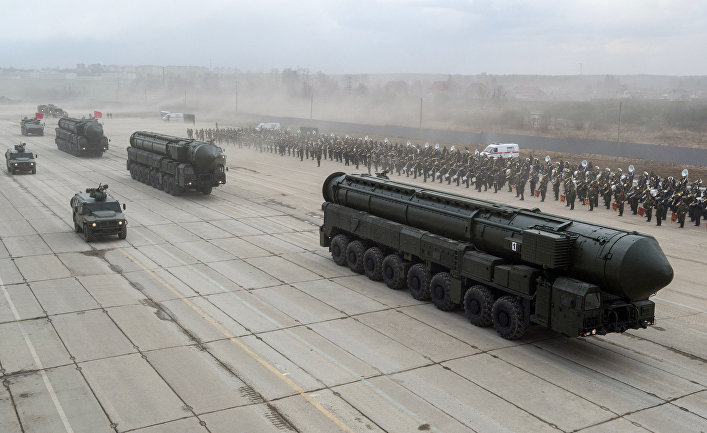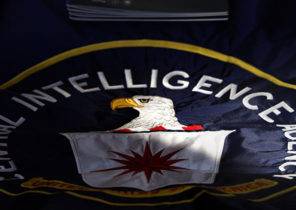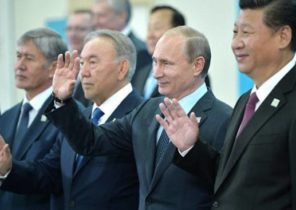
2016 has already received a lot of different characteristics. So, it is called “a year of Putin,” referring thereby to the active actions of Russia on the international political scene and in the security sphere. In a portfolio of weapons that Russia uses, is an impressive Arsenal of missile weapons, which is in some regions and causing a variety of reactions. Why is it that now actively uses the “rocket card”? What purpose it pursues?
It all began back in 2014 when Russia effectively annexed the Crimean Peninsula, after which there began the military build-up. Multiplied reports that Russia, places where the different carriers of nuclear weapons, including strategic bombers Tu-22M3. In September 2014, reports emerged that surprised some experts, and, most recently, the news has been finally confirmed. The Russians revived the so-called “Object 100” at Balaclava, is still a highly secret complex, which appeared during the cold war as part of the defense of the black sea coast.
“100” is called the base, which is in the rock (therefore also called “the Rock”) and features hidden launchers to the most powerful anti-ship missiles. At different times there were used different types, but today there could find the missiles 3М44 “Progress”, whose maximum range is 460 miles. After the collapse of the USSR “Object 100” was transferred to Ukraine, but she never had enough funds for its operation and maintenance. So now that Russia is once again getting the Crimea, took care of the restoration of the database.
In the Crimea was also placed mobile coastal missile complexes “Bastion P”, which are the most potent weapon of this type in the world. They fire anti-ship missiles P-800 “Onyx”, which is three times the speed of sound and the distance is 300 kilometers. Assigned air defense missile systems s-400 “Triumph”. News about the location of the “Bastion” and s-400 on the disputed Peninsula was received in November 2016.
However, almost simultaneously, the complex “Bastion” was in the media spotlight in connection with another region, where they were placed. We are talking about Syria, where the complex was first used in real combat, but not against ships, but against land targets of the Islamists. And while everyone knew that the Russian anti-ship missiles, as a rule, can be used against ground targets, the successful use of this weapon still drew attention and caused a certain surprise.
However, the range of Russian missiles in Syria a lot more. In December 2015 there was (because of the downed su-24M bomber) placed the s-400, which during the year added the s-300. They protect the port of Tartus. Satellite images of the base near Latakia, it is also seen that the Russian army threw back the launcher for the fearsome ballistic missile “Iskander-M”, whose range is (officially) up to 480 kilometers.
But the Iskander missiles in Syria has caused so much anxiety, how many the same system, placed in Kaliningrad. In recent years, have repeatedly reported that Russia wants to deploy these weapons in the Baltic enclave mentioned. She threatened to do this, for example, because of plans to build a radar in brdo, and missiles “Iskander” already appeared in Kaliningrad at the exercises. However, in November 2016, the Kremlin officially confirmed that decided on the permanent placement of these missiles in the Kaliningrad region. In addition to the “Iskander” in Kaliningrad are also “Bastion” and With-400.
Moreover, in November 2016, it was announced that the complex “Bastion-P” will be placed on the Kuril Islands since the end of world war II are the subject of dispute between Russia and Japan. Along with the “Bastion” as well as appeared the anti-ship complexes “Ball” shooting subsonic low-altitude anti-ship missiles. S-400 (yet) on the Kuril Islands is not, however, these complexes can partially “cover” the disputed territory from the mainland.
S-400 “Triumph” clearly has missiles with a range of 250 kilometers, and in November of 2016, supposedly (finally) into service was accepted and missiles 40N6 with the line intercept 400 kilometers. Therefore, the system (in theory) can hit air targets far over the territory of the enemy, but also, in addition to range of the missiles, s-400 is a definite concern because of its advanced radar. The fact that Russia now can closely monitor the movements of all Western aircraft over Syria, the Black sea and the Baltic States that NATO, of course, not very happy.
Favorite “delineation of circles” (corresponding to the range of the missiles) is undoubtedly important for complexes “Iskander-M” in Kaliningrad, but in their case it is necessary to note two more significant moment. Some experts have questioned the official maximum range of these weapons and believe that their real range not reach 480 kilometers, but much larger values — maybe 700 or even 1000 kilometers. So, apparently, had violated the agreement, RIAC (on the elimination of intermediate and short range), 1988.
Under this agreement, neither the United States nor Russia should not be rockets of a class “earth-earth” with a maximum range of 500 to 5,500 kilometers. This applies not only ballistic missiles but also cruise. However, Russia also has missiles with cruise missiles “Iskander-K”, which, in fact, are ground related with naval missiles “Calibre”. Yes, it is that the rockets, who have repeatedly been fired from Russian surface ships and submarines to strike at targets of Islamists in Syria. These missiles show that Russia has clearly significantly reduced the gap with the US and their famous Tomahawk missiles.
The range of the marine “Gauge” reaches more than 250 kilometers, and there is no reason to assume that his ground variant, that is “Iskander-K”, something far behind. Apart from the fact that, apparently, violated the INF Treaty, the role played by the interesting fact that “closed” launchers of ballistic missiles “Iskander-M” and cruise missiles “Iskander-K” look similar. So that a potential enemy has no chance to identify what type of missiles used against him.
The Crimea, Syria, Kaliningrad, the Kuril Islands — four different region where in November 2016 there is a new, powerful and awe-inspiring Russian missiles, or at least this was more or less officially announced. It is unlikely this is an accident, so it pays to find and describe the reason. For those who see the Russians in General and Putin in particular as the embodiment of all evil, the answer is simple: the deployment of missiles they explain, “of course”, another dose of threats and preparations for aggression. But the reality can be somewhat different if we take into account the nature of Russian politics.
You need to remember that Russian political culture prefers and respects force. The head of the country can’t stand “weak”, and sharp statements of the Russian politicians and military officers often addressed to their own domestic public. Russian negotiation style also has its own specifics, but in the West, for whatever reason, still stubbornly do not understand, so often Russia’s actions are perceived completely wrong, as would the Russians.
The Western negotiator usually begins with the presentation of their positions and designations, it is possible to find a compromise. However, in the Russian understanding, the negotiations start with “artillery preparation”, that is, expressive (speaking in modern language, “assertive”) denote the positions which Russia in any case will not leave. After Russia is putting strong pressure on the second side, which even may look like bullying. In fact, all characteristic Russian method of testing, that is testing the strength, endurance and determination.
If the partner is subjected to is the initial pressure, it will lose in the eyes of Russian respect, because it will be in place “pre-loser” of a weakling and coward. So Obama’s attempt to “reset” in relations with Russia (in the spirit of full disclosure) ended what should have been a natural end. But Donald trump, who is without a doubt much better versed in the negotiations is definitely much more chances of success. How does it all fit missiles?
Perfect. The placing of complexes “Bastion” and “Ball” on the Kuril Islands a month before Putin’s visit to Tokyo was not a Fluke but a message to Japanese politicians that Russia will never abandon the Islands, but still willing to talk with someone who respects her position. The Japanese understand, went to meet him, and Putin could be satisfied. The signing of several agreements clearly plays a less significant role than the symbolic fact that in this way Russia has overcome the isolation from the countries of the Big seven.
According to this pattern, in the case of Kaliningrad, the Crimea and Syria we are talking about the message for the members of NATO, or rather for the new President of the trump. Thus, the Kremlin has said that he wanted to use the influence in the Baltic States and is going to leave the Crimea, and also the system will not allow regime change in Syria (because it needs the bases for the Syrian presence in the Mediterranean region). Nevertheless, Russia is still interested in dialogue and cooperation with the West. If the new us administration will understand these steps as planned by the Kremlin, the will — finally — go to normal negotiations.
However, in conclusion, I should add another caveat. The Russian strategy of negotiations can sometimes be even too effective. There is still debate about what the aims of the USSR placing missiles in Cuba in 1962. There is a theory that it was the “initial pressure” with which Khrushchev wanted to force Americans to enter into negotiations, in particular, on the status of Cuba and missiles “Jupiter” in Turkey and Italy (in this case Khrushchev knew that the United States already plans to withdraw them as outdated).
But in the paranoid atmosphere of the cold war, us President Kennedy responded absolutely not, as Khrushchev had expected because the accepted missiles in Cuba as part of preparations for an attack. The ensuing escalation put the two powers on the brink of nuclear war. Now everything will depend on Western politicians, whether they understand Russian messages and whether to act to gain in the eyes of Russians it is necessary to respect without further escalation of the situation.







